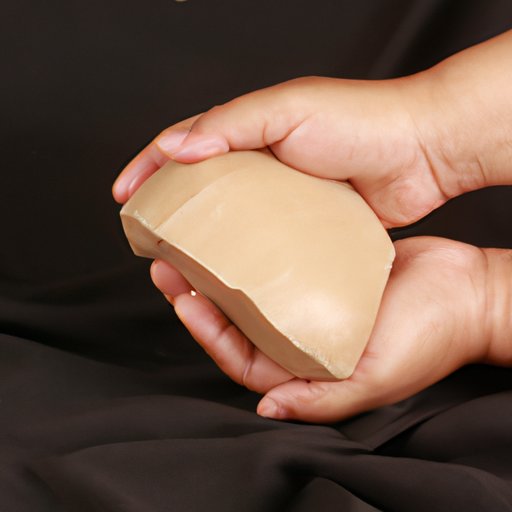
5 Simple Tips to Prevent and Treat Chafing: A Comprehensive Guide
Chafing is a common skin irritation that can occur anywhere on the body where skin rubs together. It can be caused by many things, including exercise, clothing, and sweat. Although it’s not a serious condition, chafing can be uncomfortable, painful, and even lead to skin infections if left untreated.
Wear the right clothing
One of the easiest ways to prevent chafing is to wear the right clothing. Avoid tight-fitting clothes or materials that can irritate the skin, like rough fabrics or clothing with too many seams. Instead, opt for loose-fitting, breathable clothing made from materials like cotton or moisture-wicking synthetic fibers.
Apply lubricants or anti-chafing balms
Another great way to prevent chafing is to apply lubricants or anti-chafing balms to areas prone to friction. These products help create a protective barrier between the skin and clothing, reducing friction and preventing chafing. Some popular products include petroleum jelly, baby powder, or specialized balms like Bodyglide or Chamois Butt’r.
Follow proper hygiene practices
Maintaining proper hygiene is essential in preventing chafing. Shower or bathe regularly, especially after exercising or sweating. It’s also important to keep the affected area dry and clean, as moisture can exacerbate chafing. Use a soft towel to gently pat the skin dry, avoiding any rough rubbing that can further irritate the skin.
Stay dry
As mentioned above, staying dry is crucial in preventing chafing. If you’re prone to sweating, bring along extra clothing to change into after working out or throughout the day. It’s also a good idea to choose moisture-wicking fabrics for socks and underwear to help keep those areas dry.
Choose the right activities
Finally, choosing the right activities can also help prevent chafing. Avoid activities that involve repetitive movements, like running or walking long distances. Instead, try low-impact activities like swimming, cycling, or yoga.
Say Goodbye to Chafing with These Easy-to-Follow Steps
If you’re already experiencing chafing, don’t worry. There are several steps you can take to treat it and soothe irritated skin.
Step-by-step instructions on how to prevent and treat chafing
If you’re prone to chafing, it’s important to take preventive measures before jumping into any activity. Apply lubricants or anti-chafing balms to areas prone to friction, and wear loose-fitting, breathable clothing. Following proper hygiene practices and staying dry can also help prevent chafing.
If you’re already experiencing chafing, follow these steps to soothe and heal irritated skin:
- Clean the affected area with gentle, fragrance-free soap and water.
- Apply a healing ointment like Neosporin or Aquaphor to the affected area.
- Cover the affected area with a sterile, non-stick bandage to allow it to heal.
- Take a break from any activities that may be causing the chafing to give your skin time to heal.
The Ultimate Guide to Combat Chafing: Expert Advice and Ways to Relieve Discomfort
If you’ve tried all of the above and are still experiencing chafing, it’s time to seek out expert advice and try different ways to relieve discomfort.
Expert advice from dermatologists or athletes
Consult a dermatologist or sports medicine physician for personalized advice and treatment options. They may recommend prescription medications, such as topical steroids or antibiotics, to treat infected or severe cases of chafing. Alternatively, athletes who have experience with chafing may offer some helpful tips and tricks for preventing and treating it.
Different ways to relieve discomfort such as ice packs, compresses, or home remedies
In addition to medical treatments, there are several other ways you can relieve discomfort caused by chafing:
- Apply a cool, damp cloth or ice pack to the affected area for 15-20 minutes to reduce inflammation and pain.
- Take an over-the-counter pain reliever like ibuprofen or acetaminophen to reduce pain and swelling.
- Use a compress or bandage to reduce friction and protect the affected area from further irritation.
- Try natural remedies like aloe vera, coconut oil, or tea tree oil to soothe and heal irritated skin.
Chafing Secrets Revealed: Natural Remedies and Products to Soothe Your Skin
For those who prefer natural remedies, there are several products and ingredients that can help soothe and heal chafed skin.
Aloe vera is a popular natural remedy that helps reduce inflammation and pain while promoting healing. Coconut oil and shea butter can also be used to moisturize and soothe irritated skin, while tea tree oil has antimicrobial properties that can help prevent infection.
There are also many specialized products available that use natural ingredients to combat chafing, like Boudreaux’s Butt Paste or Gold Bond Friction Defense Stick.
The Do’s and Don’ts of Preventing Chafing: What You Need to Know to Enjoy Your Activities Pain-Free
Now that you know how to prevent and treat chafing, let’s go over some do’s and don’ts to help you enjoy your activities pain-free.
Do:
- Wear loose-fitting, breathable clothing.
- Use lubricants or anti-chafing balms on areas prone to friction.
- Maintain proper hygiene practices, including regular showers and dryness.
- Take breaks from activities that may cause chafing.
- Consult a dermatologist or physician if you experience severe or persistent chafing.
Don’t:
- Wear tight-fitting, rough, or scratchy clothing.
- Use products with fragrance or alcohol, which can irritate the skin further.
- Ignore chafing or allow it to go untreated, as it can lead to infection or other complications.
Conclusion
Chafing is a common and uncomfortable skin irritation, but it can be prevented and treated with the right steps and advice. By wearing the right clothing, applying lubricants or balms, following proper hygiene practices, staying dry, and choosing the right activities, you can reduce your chances of experiencing chafing. If you do experience chafing, follow the steps above to soothe and heal irritated skin.
Remember, prevention is key, so make sure to follow the do’s and don’ts listed above to enjoy your favorite activities pain-free.




